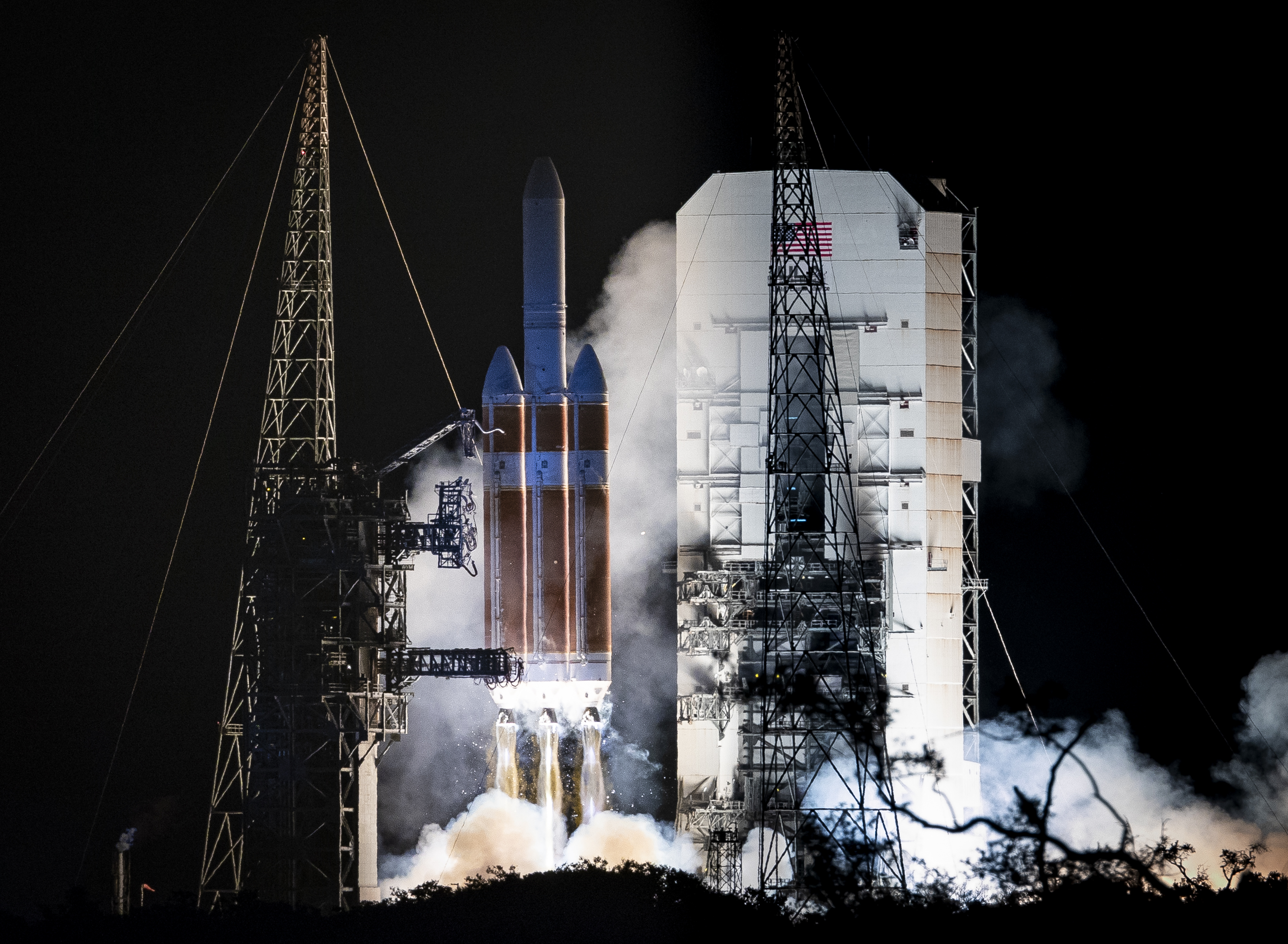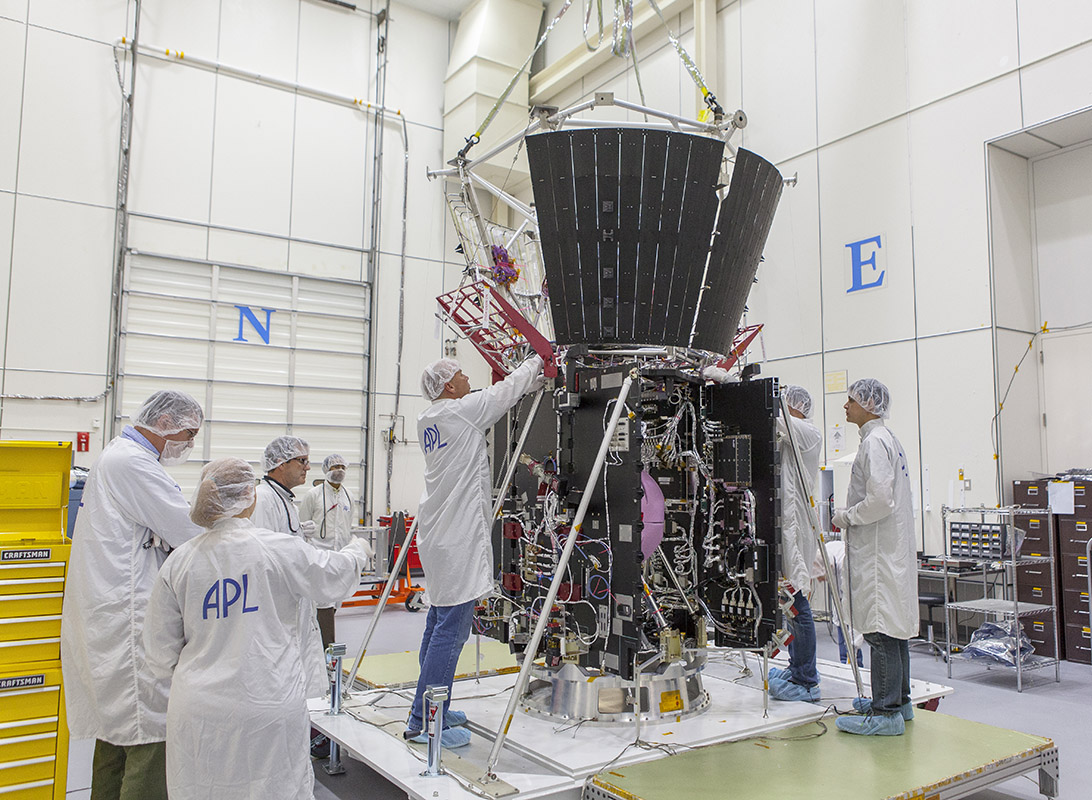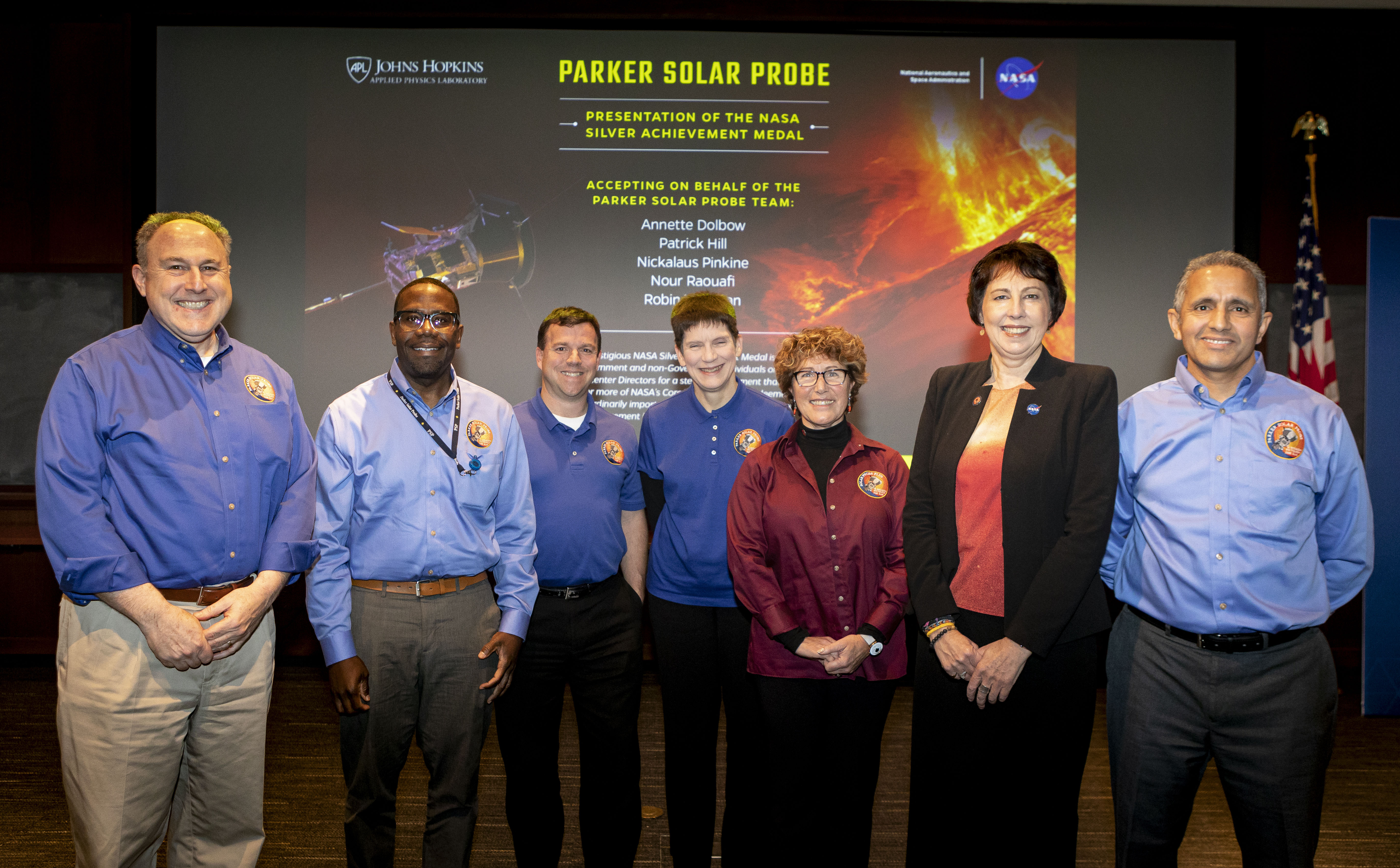Parker Solar Probe Team Awarded NASA Silver Achievement Medal
Posted on 2019-11-13 14:58:56Parker Solar Probe has been awarded the NASA Silver Achievement Medal in recognition of its “stellar achievement” as humanity’s first mission to explore the Sun’s corona and the solar wind within the extreme environment around our star.
The medal is awarded to government and non-government individuals or teams by NASA center directors “when it is deemed to be extraordinarily important and appropriate to recognize such achievement.” The medal was announced earlier this year at the NASA 2019 Agency Honor Awards at NASA’s Goddard Space Flight Center in Greenbelt, Maryland.
During a Nov. 12 ceremony at the Johns Hopkins Applied Physics Laboratory, or APL, in Laurel, Maryland, mission leadership spoke about the challenges of creating and launching Parker Solar Probe. The mission represents the culmination of a sixty-year quest to create a spacecraft that could withstand the intense heat and radiation of the near-Sun environment while delivering revolutionary science about heliophysics. APL designed, built, and operates the mission for NASA.
“This is an incredibly complex spacecraft and mission unlike any that had been built before,” said APL’s Jason Kalirai, civil space mission area executive. “It’s a mission we’ve waited 60 years to accomplish because of the challenges of building a spacecraft that could operate close to the Sun. The science that Parker Solar Probe is already returning will rewrite the textbooks on our understand of stars and heliophysics. We’re very proud of NASA’s recognition of the mission’s accomplishments so far, and we’re only a little over one year into a seven year mission.”
The Sun’s powerful influence over the solar system was not really understood until the early years of the Space Age. Then, in 1958, physicist Eugene Parker published a groundbreaking scientific prediction theorizing the existence of a supersonic flow of particles from the Sun into the interplanetary medium, that we now call the solar wind. In 1959, the National Academy of Sciences’ Simpson Committee submitted a list of exploration missions America should pursue through an agency that would become NASA, including a probe to study the sun’s corona. Parker Solar Probe is the first NASA mission to be named after a living person.
Three enabling technologies developed by APL allowed Parker Solar Probe to finally accomplish this long-standing scientific goal. A revolutionary heat shield that protects the spacecraft from the Sun’s intense heat; a cooling system for the spacecraft’s solar arrays; and autonomous systems that allow Parker Solar Probe to best align the heat shield as it flies closer to the Sun than any spacecraft in history. Parker is the fastest human-made object ever flown (213,200 miles per hour) and hold the record as the closest spacecraft to the Sun (just under 15 million miles). It will eventually reach a distance of under 4 million miles from the solar surface, at speeds reaching 430,000 MPH.
These technological accomplishments are what allow Parker Solar Probe to deliver previously unobtainable science from the Sun’s atmosphere. That science is changing how we understand our star and others across the galaxy.
“Parker Solar Probe is a mission of fundamental science discovery,” said NASA Heliophysics Division Director Nicky Fox, who presented representatives of the team with the Silver Achievement Medal. “It is going on a voyage of discovery to somewhere we’ve never been before, because it was simply too hard to go. The Parker Solar Probe mission is this really beautiful partnership between the science community and the engineers at APL who came together to tackle this unprecedented challenge."
Launched on Aug. 12 2018, Parker Solar Probe has already performed three close encounters of the Sun. On Nov. 12, Parker Solar Probe released its first science data to the public. On Nov. 15, the spacecraft will complete its third orbit of the Sun, and on Dec. 26, Parker Solar Probe will perform its second Venus flyby, lowering the perihelion to 11.5 million miles from the Sun’s surface.
Parker Solar Probe is part of NASA's Living with a Star Program, or LWS, to explore aspects of the Sun-Earth system that directly affect life and society. LWS is managed by NASA's Goddard Space Flight Center for the Heliophysics Division of NASA's Science Mission Directorate in Washington. Johns Hopkins APL manages the Parker Solar Probe mission for NASA. The instrument teams are led by principal investigators from the Naval Research Laboratory; Princeton University; University of California, Berkeley; and University of Michigan.
Media Contact: Justyna Surowiec 240-228-8103 justyna.surowiec@jhuapl.edu

PSPNASASilverAchvmentMedal
Credit: NASA/Johns Hopkins APL/Ed Whitman
High-Res Image
PSPNASASilverAchvmentMedal
Credit: NASA/Johns Hopkins APL/Ed Whitman
High-Res Image
PSPNASASilverAchvmentMedal
Credit: NASA/Johns Hopkins APL/Ed Whitman
High-Res Image